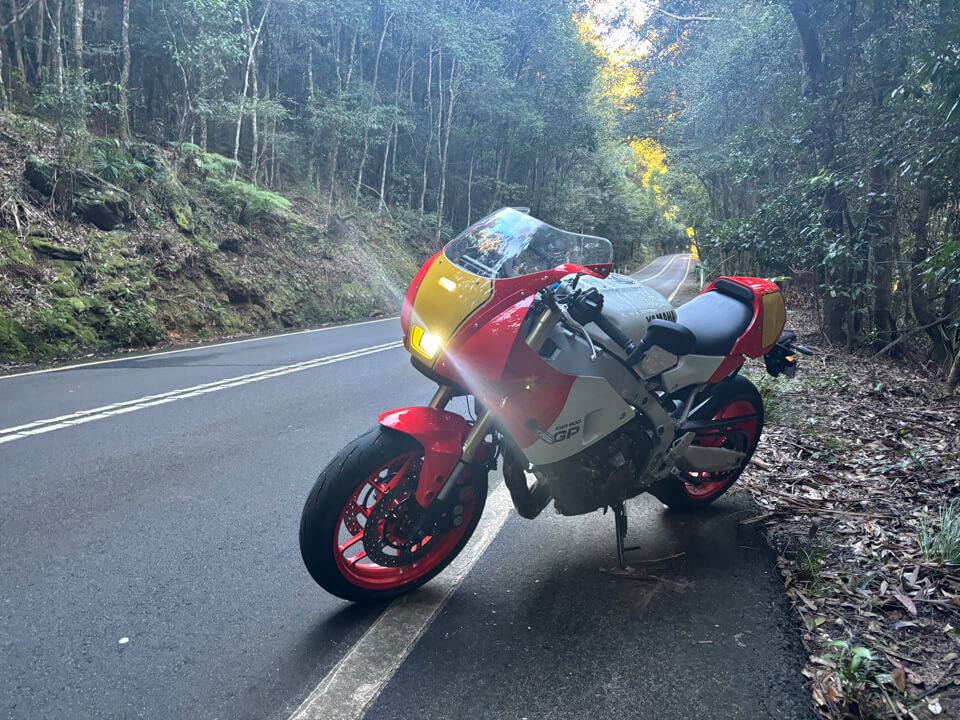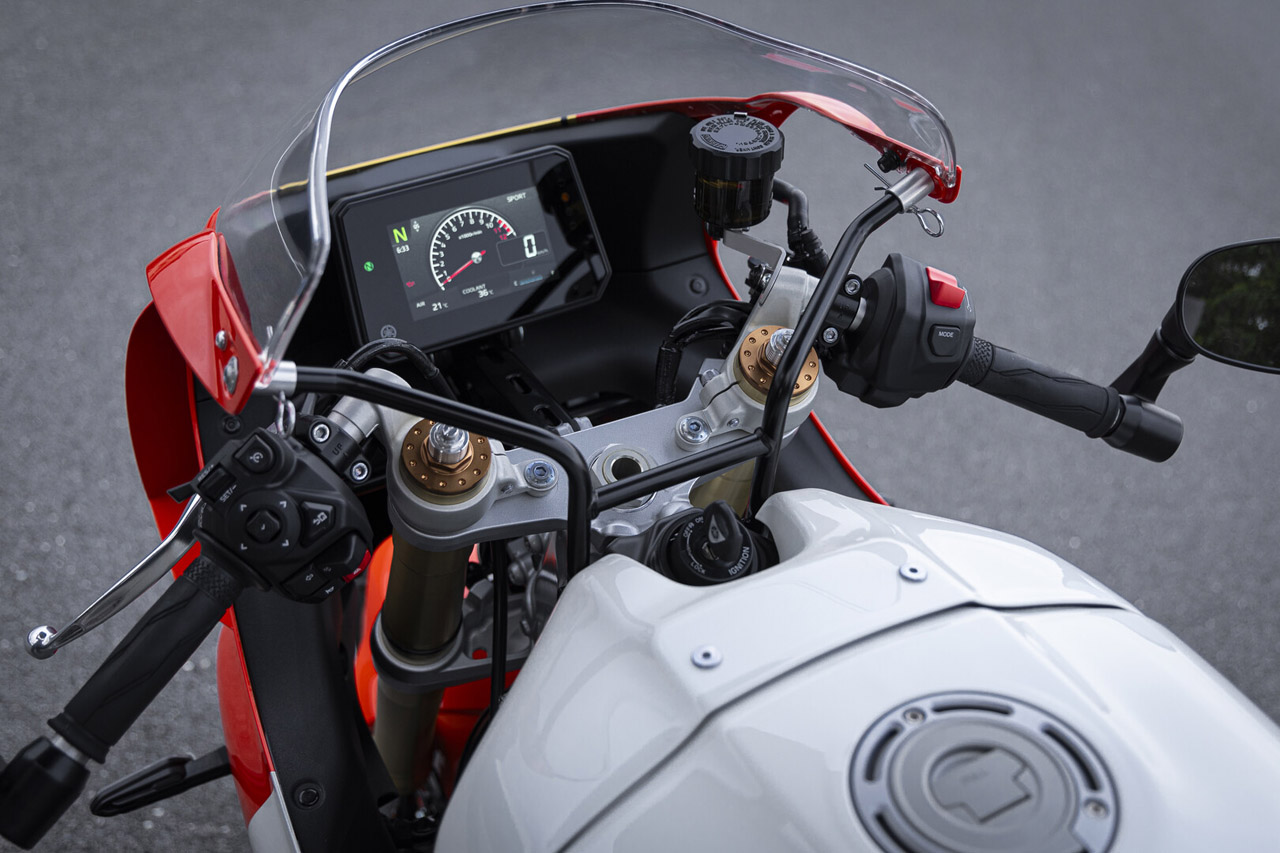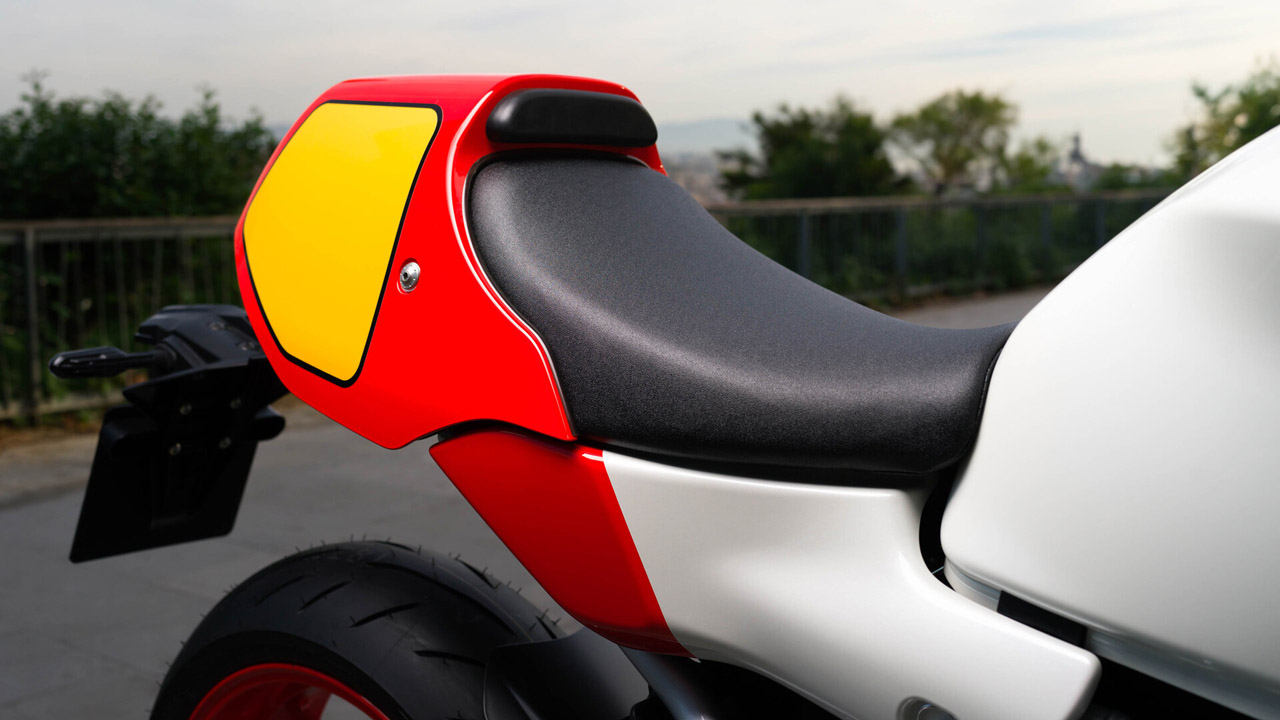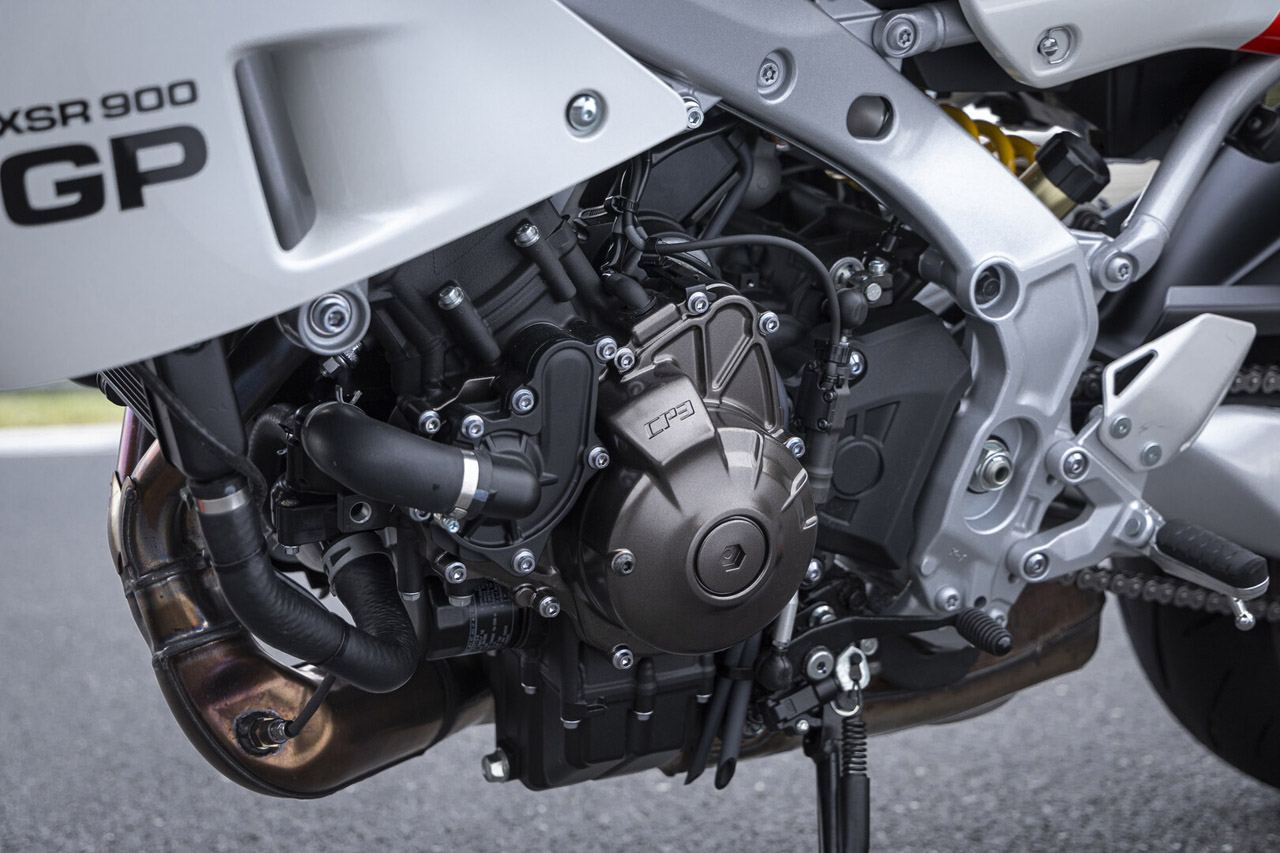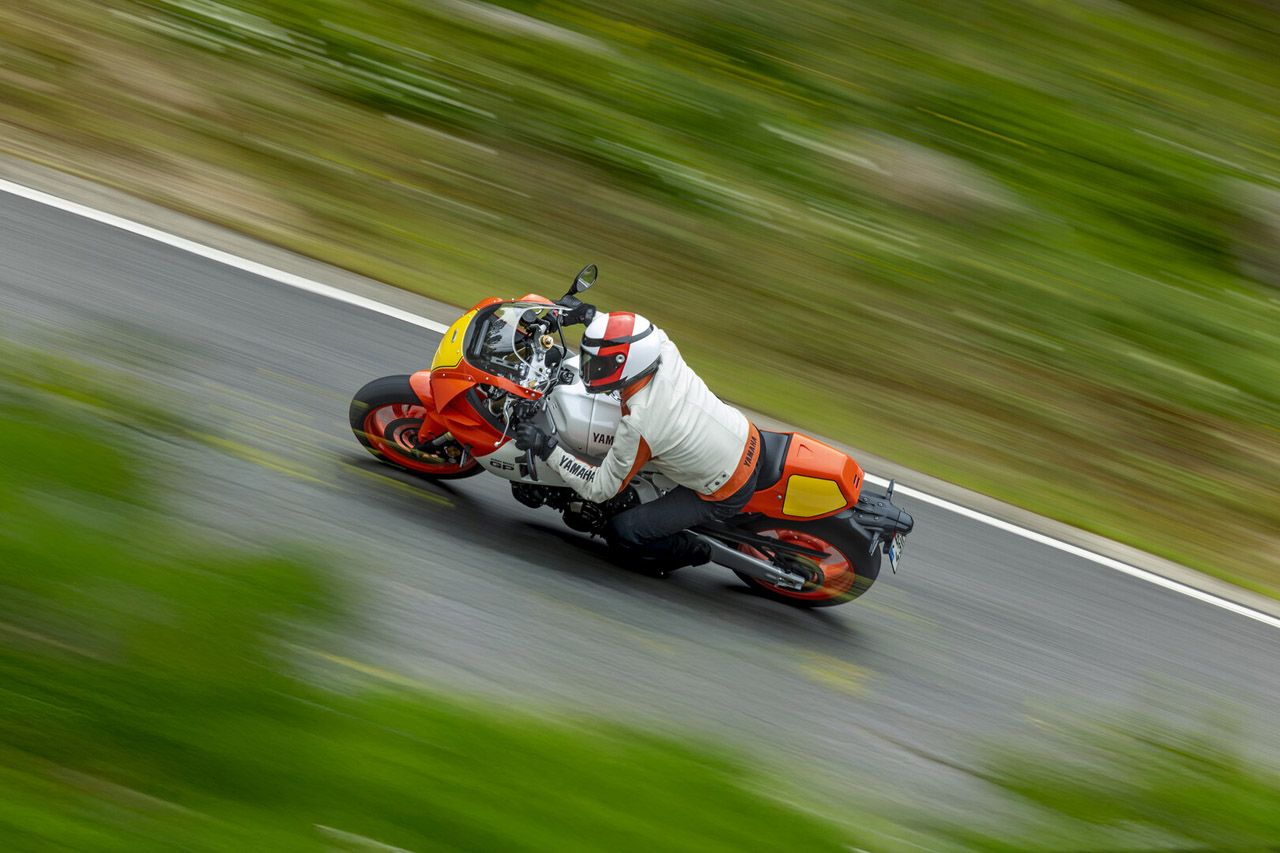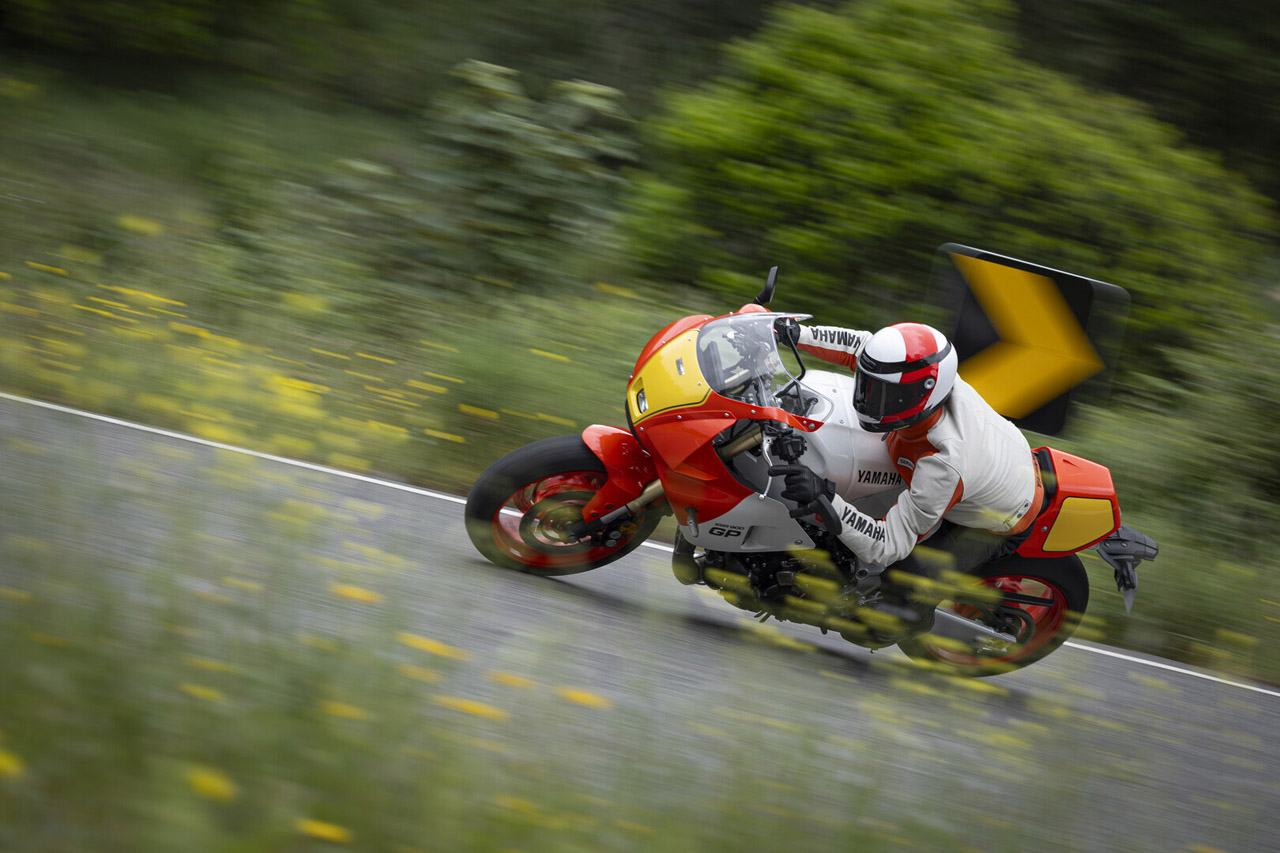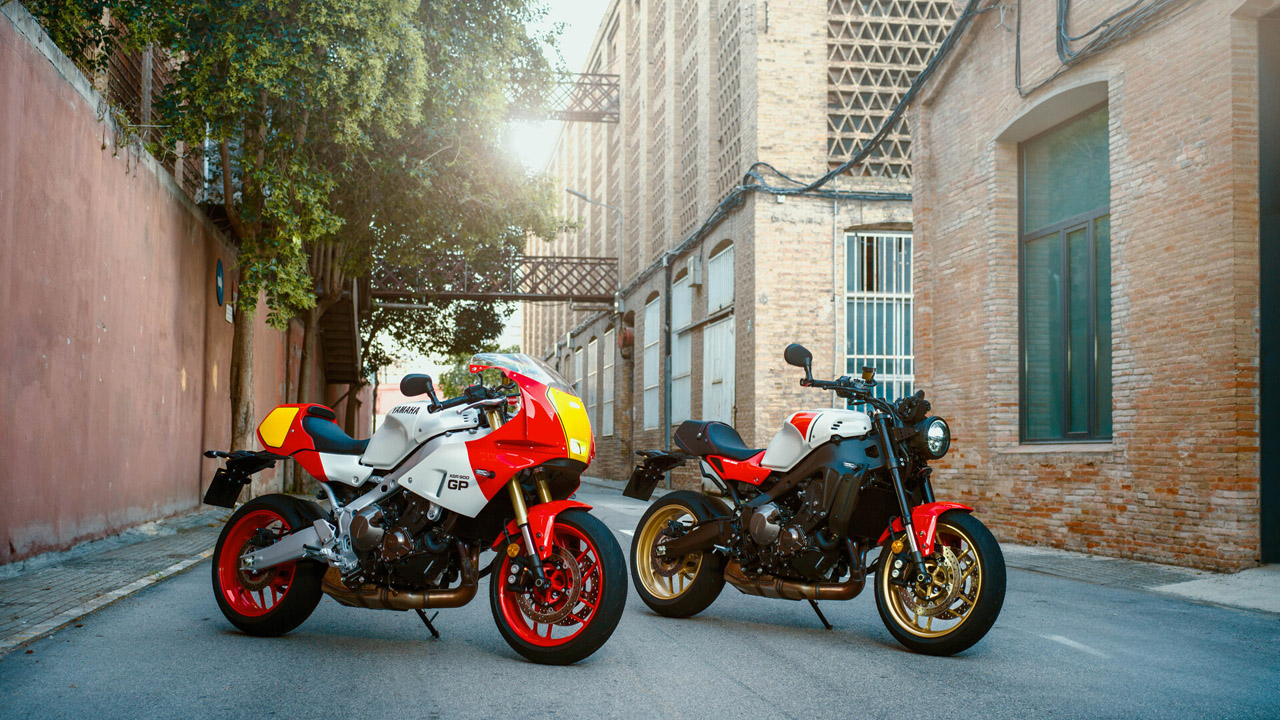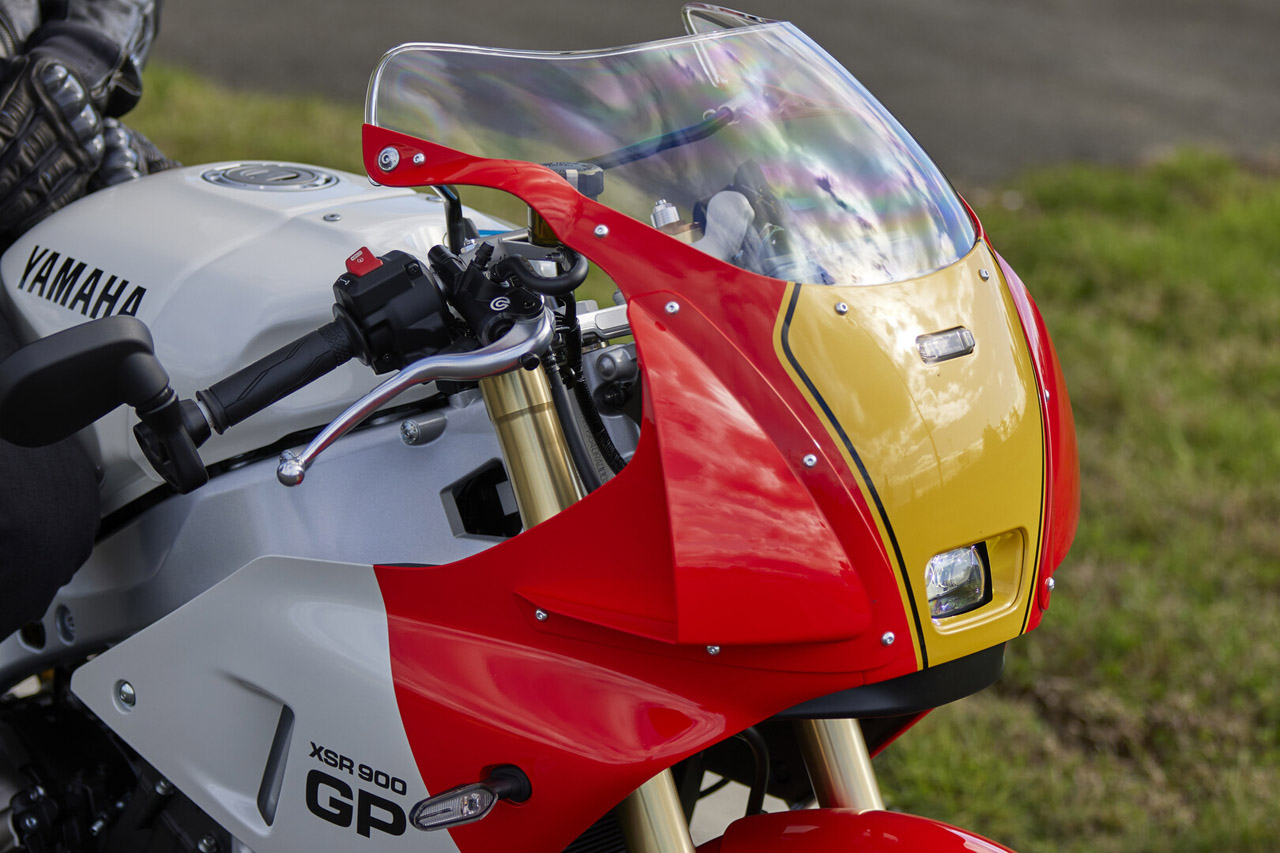Staff Review | Yamaha XSR900 GP
Throwback Thrills With Modern Tech
As a more sports bike orientated version of Yamaha’s popular XSR900 sport heritage machine, the XSR900 GP promised added sports attitude as well as retro-sport looks via its half-faired styling inspired by the golden age of motorcycle grand prix racing, the 1980s. It also promised lashing of Yamaha’s modern cutting-edge tech, and of course the triple-cylinder CP3 engine at its heart.
It was these promises that had YMA’s Communications Manager, Chris Dobie, champing at the bit when the first batch of bikes were uncrated at Yamaha Motor Australia HQ in preparation for our media partners to review. Of course, each machine needs to be run in, and that’s where Chris had parked himself at the head of the line. More than 1000km later her returned the bike with a smile on his face and a detailed review of his thoughts about the new machine.
“Yamaha’s triple cylinder CP3 engine is the star of the show. Is there anything this powerplant can’t do? ”
Chris Dobie
First Impression
This bikes looks better in person that it does in the promo picks, and that’s no mean feat. Although not intended as a replica of any one bike, as soon as I looked over its tank shape, half-fairing - complete with bolt on handguards – and red and white colour scheme I couldn’t help but think of Eddie Lawson’s mid-1980s GP machine, possibly one of the best-looking Grand Prix machines of the era.
The fairing stays, fork leg preload adjusters preload adjusters, and a hint of yellow number board visible above the dash yelp transport the rider back in time and provide the impression that you are riding a classic GP machine. The first giveaway that this is a modern machine is the dash. While Eddie would have had a giant analogue tachometer and a few warning lights, the XSR900 GP has a five-inch TFT dash (with retro theme graphics of course) all of the displays and adjustable riding modes are easily navigated and selected via the same awesome switchgear set up as the recently-released MT-09, possibly one of the most intuitive interfaces I have ever had the please to use. While Eddie Lawson’s bike was cutting edge for its time, the electronics suit on the SXR900 GP compared the ride-by-feel system 1980s GP racers had, is like comparing a slingshot to the Space Shuttle.
The more you look around the bike the more you notice the small details that give this bike a true retro feel. Racer ‘R’ clips hold the cowling; Dzus fasteners are everywhere (all the bodywork can be removed without tools); the yellow race number panels on the seat cowl (which is also removable), I was discovering something new each time I rode the bike.
The ride
While its inspiration come from the 1980s, its tech is very much 21st century. All the latest good gear has been used. The swingarm is from the XSR900, the CP3 engine is 2024 MT-09 spec, as is the frame, adjustable suspension, radial front master cylinder, dash/switchgear. This means the XSR900 GP also gets the updated riding ergonomics of the 2024 MT-09 which is another major plus for the bike. The clip-on style bars on the XSR900 GP, while not full sports bike behind-the-bubble spec, put the ride in a slightly more sporty position that the MT-09 with its higher-set handlebar. The bars are more forward then the MT-09 so the seat slightly closer to the headstock, the pegs are also a little higher and mover back slightly.
The whole set up is sporty, but nowhere near R1 position, more R3 or R7 style. My 192cm frame fit it nicely and I was mostly comfortable on long rides and everyday commuting, although my shoulders did get a bit of a workout on long freeway stretches. The upside to the sportier position is that you feel at one with the bike, like it’s an extension of your body. Through the twists and turns of my favourite mountain run I felt like I’d been riding the bike for a long time. Gripping the tank with my knees and getting down on the tank felt very natural. Being more forward on the XSR900 GP compared to the MT-09 I had more feel in the front end, not that the MT lacks feel, it’s just better on the GP.
As always, Yamaha’s triple cylinder CP3 engine is the star of the show. Is there anything this powerplant can’t do? Tracer 9GT, MT-09/SP, XSR900, and now the XSR900 GP, it’s proven to be the perfect heart anything Yamaha chooses to use it for. The adjustable riding modes on the 2024 electronics suite make setting up the power delivery to suit your riding preferences easier than ever before.
The XSR900 GP is not going to be everyone’s cup of tea, and that’s what makes it special. If you love the styling and Yamaha’s mix of retro looks and modern technology, you’re most of the way there because the electronics and engine cannot be faulted.


